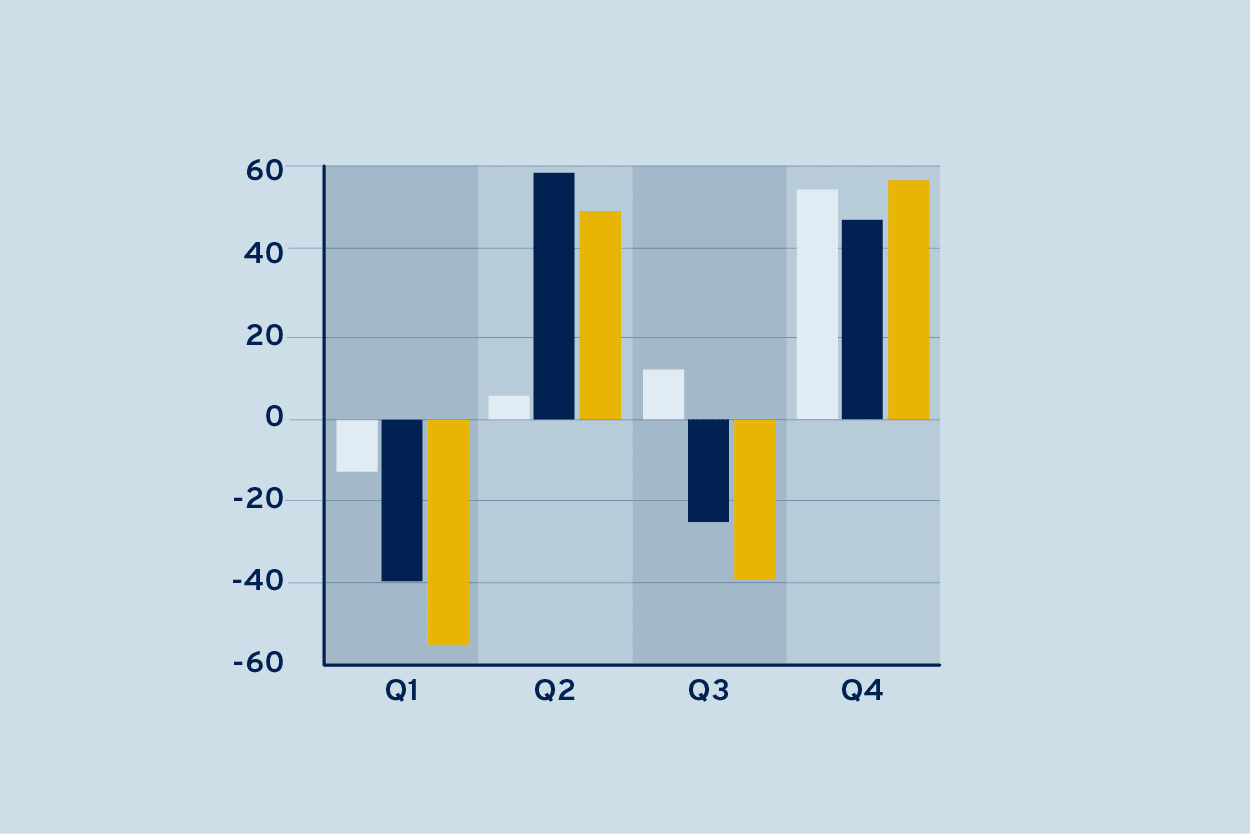The pressure is on for investment companies to ensure the accuracy of the performance information they report, so the underlying data driving those publicized figures must be of the highest quality. Reporting results against portfolio benchmarking with erroneous underlying data has financial and reputational consequences.
Accurate indices and benchmarks are mission critical to portfolio management, performance measurement, attribution analysis, and reporting on securities and investments. Taking the time and complexity out of the sourcing, DataOps (data operations), and delivery of portfolio benchmarking data to the front, middle and back office applications that depend on it reduces costs and resource constraints and improves accuracy.
For global or multi-strategy investment companies, more than one portfolio benchmark data provider is necessary. Sourcing this data in the various formats and feeds available from each provider makes it difficult to integrate cleanly with accounting, portfolio management, risk, or performance measurement systems.
It is often insufficient to accept data feeds from vendors as is. Firms now feel an increased need to take the responsibility to validate the data and make it fit for use. Moreover, for effective portfolio management the underlying constituents require a full set of reference attributes, more than is available from a typical benchmark provider.
Blended benchmarks and custom portfolio benchmarking
In certain instances, investment strategies require the creation of blended benchmarks or a custom benchmark derived from standard indices. Investment companies that seek to measure performance against self-defined metrics must manage and store additional data for the blended benchmark or custom benchmark pool. An automated workflow to load, validate, enrich, store, and distribute underlying data is required for scalable and reliable blended benchmark reporting.
Triggers for a change in investment company DataOps practices
By the time an investment company has grown to about $15bn AUM the head of operations is often seeking to outsource and automate non-investment processes. Also, by this stage, most firms’ benchmark and other investment data requirements can no longer be satisfied by one supplier. Data warehousing, DataOps and data integration with internal and outsourced services requires a strategy and policies, delivered by a capable solution. The requirements for portfolio benchmarking typically include:
- Sourcing benchmark and other information from multiple external sources, through managed connections or feeds
- Storing, validating and comparing multiple sources to ensure the quality of standard indices
- Automatically retrieving a complete set of security information for each constituent
- Creating and maintaining blended benchmarks and custom benchmarks
Source benchmark and other information from multiple external sources
Simplifying the process of obtaining benchmark and constituent information from external sources is key to data operations’ ability to be responsive to business needs. The structure or formats of data feeds change over time, requiring constant monitoring and ad hoc maintenance. And new portfolio benchmarks must be onboarded to support new strategies. Having out-of-the-box, maintained interfaces to prominent benchmark, pricing and reference data sources means faster benchmark onboarding and no operations resources to support them. For in-house sources or additional data vendors a dedicated toolkit can accelerate the task of data integration and ease the burden of maintaining it. These are key considerations for efficiency and for reducing manual processes that are prone to error.
Store, validate and compare – composition, constituents, weightings
Once the data is available it needs to be stored, validated, and multiple sources need to be compared to ensure the quality of standard indices. These activities are most effective when supported by a mature data model and dedicated investment data warehouse. Multiple sources of vendor portfolio benchmark data often need to be normalized and stored, both at the index level, and with full constituents and weightings. Best practice validation rules then need to be applied to generate a quality-checked golden copy of each benchmark. For example, as part of the process, consistency and correctness checks will likely be applied to compare the sum of the weighted averages against the total, identifying missing constituents and incorrect weightings. And, if the composition of a portfolio benchmark changes, historical data records need to be maintained, showing constituents and weightings over time for comparison and reporting purposes.
A complete set of securities information for each constituent
A full securities master record for each constituent security in a portfolio benchmark enables investment companies to apply different classifications and other roll-ups for detailed portfolio analysis and reporting. Where the underlying constituent data supplied from a benchmark provider is incomplete, it needs to be automatically detected and retrieved from available internal or external sources. Portfolio benchmark securities should not be released for publishing to downstream systems until they are correctly and completely defined.
Creating blended benchmarks and custom portfolio benchmarking
After the set of constituents and weightings has been defined, it is critical to ensure that a blended benchmark or custom benchmark is perpetuated and maintained consistently throughout the firm. To construct and support the benchmark according to your defined composition and weighting method (e.g. fixed, market capitalization, drifting) the necessary constituent information needs to be automatically available and logically interlinked. These linkages must be perpetuated when publishing to downstream systems. This ensures accuracy and confidence in portfolio management, risk analysis and performance reporting.
Contact us to find out more about portfolio benchmarking

